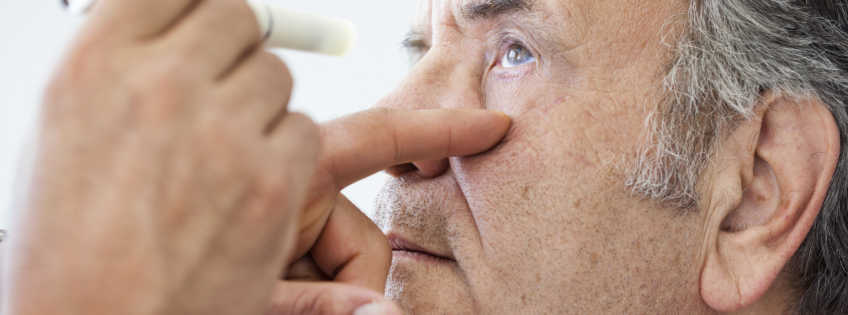Cataract according to TCM

Cataract is a Greek word and translated means “rushing down”. Cataract is a disease of the eye in which the lens becomes cloudy and the patient sees as if looking through misty, dirty or slow freezing glass. According to WHO, it is one of the leading causes of blindness in adulthood (48%) worldwide. In the vast majority of cases, cataracts are caused by ageing, called senile cataract. The root cause, however, is unknown to Western medicine. It can also develop after the use of certain chemical drugs, especially corticosteroids, after trauma, inflammation, tumour or in metabolic and autoimmune diseases. The basic symptoms of cataracts include cloudy vision, blurred vision, out-of-focus image, especially when looking at objects in the distance, hypersensitivity to strong light (e.g. the sun), glare when driving at night, colours are not as rich as in the other eye, they refract, have a different intensity and shade, objects appear double or triple when viewed with one eye, worsening myopia and astigmatism (cylindrical eye imperfection). According to Western medicine, cataract can not be stopped or slowed down by any therapeutic intervention – metabolic changes occur inside the lens resulting in the clouding of the peripheral and optical part of the lens. There is no other treatment except surgery.
According to Chinese medicine this process can be slowed down and sometimes even stopped – it always depends on the stage of the disease which the patient is at when coming to have herbal treatment. Traditional Chinese Medicine (TCM) distinguishes 3 basic causes and therapies. They all “revolve” around the GAN liver pathway, because according to TCM this pathway it nourishes the eyes, especially the liver blood YIN and XUE playing the main role. This condition can be likened to the sap of a tree that does not reach the top, the upper floors, in this case the eyes, which are not sufficiently nourished by the life-giving fluid and so their function fades away just like an engine without oil and no power.
| 1. Yin deficiency kidney and liver SHEN/GAN YIN XU with blood stasis YO YUE | |
| Tongue: | Red without coating (as if peeled) and enlarged sublingual veins |
| Pulse: | Surface FU and blank XU or rough SE |
| Therapy: | Return of Sharpvision of Lynx (code 183) + always Softness of Heavenly Fay (code 052) + always Beverage of Heavenly Grace (code 888) |
| 2. Yin deficiency liver GAN YIN XU with spleen moisture PI QI XU + SHI | |
| Symptoms: | Obesity, fatigue, swollen limbs and joints in the afternoon or when tired |
| Tongue: | Swollen, especially around the edges and with a sticky coating |
| Pulse: | Deep CHEN and weak XU |
| Therapy | Cleaning of Corn Storehouse (code 073) + Return of Sharpvision of Lynx (code 183) + Beverage of Chinese Sages (code 900) |
| 3. Rising liver heat GAN HUO/ GAN YANG SHI | |
| Symptoms: | Headache, dizziness, vertigo, ringing in the ears |
| Tongue: | Red |
| Pulse: | Tense XIAN and strong SHI |
| Therapy: | Pill of Gentian + Return of Sharpvision of Lynx + always Beverage Five Stairs (code 850) |
In case of doubt with the choice of herbal products, we recommend TCM Test Tongue Analysis, which is evaluated by MUDr. Petr Hoffmann and you will receive a recommendation (herbal products and foods) to your e-mail within 3 days.


